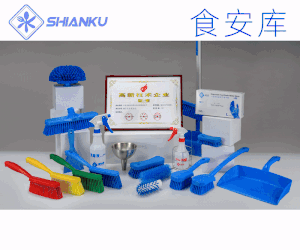近日,華中農業(yè)大學油菜團隊在Journal of Advanced Research和Plant Biotechnology Journal分別發(fā)表題為“BnaPPT1 is essential for chloroplast development and seed oil accumulation in Brassica napus”和“Pyruvate transporter BnaBASS2 impacts seed oil accumulation in Brassica napus”的研究論文。研究結果表明磷酸烯醇式丙酮酸轉運蛋白BnaPPT1和丙酮酸轉運蛋白BnaBASS2在油菜籽粒油脂積累方面起著重要作用。
植物細胞內,磷酸烯醇式丙酮酸鹽/磷酸鹽轉運蛋白(PPT)和膽汁酸-鈉轉運蛋白(BASS2)分別將糖酵解途徑代謝物磷酸烯醇式丙酮酸和丙酮酸從細胞質轉運到質體,從而滿足質體中的脂肪酸合成和其他代謝活動。植物中,PPT和BASS2對質體中脂肪酸合成以及種子中油脂積累的影響尚不清楚。發(fā)表在Journal of Advanced Research的研究以甘藍型油菜為研究對象,發(fā)現了葉綠體膜定位的BnaPPT1在葉片膜脂合成和葉綠體發(fā)育中發(fā)揮著重要作用,并影響葉片光合作用。研究結果表明,將BnaPPT1敲除后,油菜生長緩慢,葉片呈淡黃色。葉片色素測定和葉綠體超微結構觀察顯示,突變體中葉綠素及葉綠素前體含量均顯著降低,葉綠體的基粒片層變薄,形成更多更小的葉綠體和淀粉粒。基于液相色譜串聯質譜法(LC-MS/MS)的脂質代謝物分析顯示,突變體中葉綠體膜脂主要成分MGDG、DGDG和PG含量分別降低67.8%、68.5%和16.4%。此外,BnaPPT1影響了油菜種子的糖酵解途徑和脂質代謝途徑,在種子油脂合成中發(fā)揮著重要作用。BnaPPT1突變體種子含油量降低了2.2 ~ 9.1%,而過表達BnaPPT1顯著提高了種子含油量2.1 ~ 3.3%。
發(fā)表在Plant Biotechnology Journal的研究創(chuàng)建了BnaA05.BASS2的過表達油菜材料,通過基因編輯創(chuàng)建了BnaA05.BASS2 and BnaC04.BASS2-1的油菜雙突變體。油菜BASS2雙突變體的株高、單株角果數、粒重和單株產量等均顯著下降,而過表達植株的主要農藝性狀基本沒有受到影響。連續(xù)3年對含油量表型分析表明,突變體的籽粒含油量降低了2.8 ~ 5.0%,而過表達BnaA05.BASS2顯著提高了籽粒含油量1.4 ~ 3.4%。BnaBASS2過表達顯著提高了參與油脂合成和油體形成的多個基因的表達水平,促進了籽粒中的油脂積累。基于液相色譜串聯質譜法的代謝組分析表明敲除BnaA05.BASS2 and BnaC04.BASS2-1可以顯著降低葉綠體中丙酮酸鹽的含量,證明了BnaBASS2負責向質體轉運丙酮酸鹽。同時,BnaBASS2可以顯著影響油菜種子葉綠體中糖酵解、脂肪酸合成和能量相關代謝產物的含量。綜上所述,BnaPPT1和BnaBASS2在質體代謝物轉運方面發(fā)揮著重要的作用,可以顯著影響油菜籽粒中的油脂積累。
華中農業(yè)大學油菜遺傳改良團隊的唐珊博士為兩篇論文的第一作者,郭亮教授為通訊作者,魯少平副研究員和姚璇副教授也參與了該研究的指導。兩項研究得到了國家自然科學基金、湖北洪山實驗室重大項目、華中農業(yè)大學-中國農業(yè)科學院深圳農業(yè)基因組研究所聯合項目、中國博士后科學基金和湖北省博士后創(chuàng)新崗位資助。
【英文摘要】
Introduction
Phosphoenolpyruvate/phosphate translocator (PPT) transports phosphoenolpyruvate from the cytosol into the plastid for fatty acid (FA) and other metabolites biosynthesis.
Objectives
This study investigated PPTs' functions in plant growth and seed oil biosynthesis in oilseed crop Brassica napus.
Methods
We created over-expression and mutant material of BnaPPT1. The plant development, oil content, lipids, metabolites and ultrastructure of seeds were compared to evaluate the gene function.
Results
The plastid membrane localized BnaPPT1 was found to be required for normal growth of B. napus. The plants grew slower with yellowish leaves in BnaA08.PPT1 and BnaC08.PPT1 double mutant plants. The results of chloroplast ultrastructural observation and lipid analysis show that BnaPPT1 plays an essential role in membrane lipid synthesis and chloroplast development in leaves, thereby affecting photosynthesis. Moreover, the analysis of primary metabolites and lipids in developing seeds showed that BnaPPT1 could impact seed glycolytic metabolism and lipid level. Knockout of BnaA08.PPT1 and BnaC08.PPT1 resulted in decreasing of the seed oil content by 2.2 to 9.1%, while overexpression of BnaC08.PPT1 significantly promoted the seed oil content by 2.1 to 3.3%.
Conclusion
Our results suggest that BnaPPT1 is necessary for plant chloroplast development, and it plays an important role in maintaining plant growth and promoting seed oil accumulation in B. napus.
論文鏈接:https://www.sciencedirect.com/science/article/pii/S2090123222001631
【英文摘要】
BILE ACID: SODIUM SYMPORTER FAMILY PROTEIN 2 (BASS2) is a sodium dependent pyruvate transporter which transports pyruvate from cytosol into plastid in plants. In this study, we investigated the function of chloroplast envelope membrane-localized BnaBASS2 in seed metabolism and seed oil accumulation of Brassica napus (B. napus)。 Four BASS2 genes were identified in the genome of B. napus. BnaA05.BASS2 was overexpressed while BnaA05.BASS2 and BnaC04.BASS2-1 were mutated by CRISPR in B. napus. metabolite analysis revealed that manipulation of BnaBASS2 caused significant changes in glycolysis-, fatty acid synthesis- and energy-related metabolites in the chloroplasts of 31 day-after-flowering (DAF) seeds. The analysis of fatty acids and lipids in developing seeds showed that BnaBASS2 could affect lipid metabolism and oil accumulation in developing seeds. Moreover, overexpression (OE) of BnaA05.BASS2 could promote the expression level of multiple genes involved in the synthesis of oil and formation of oil body during seed development. Disruption of BnaA05.BASS2 and BnaC04.BASS2-1 resulted in decreasing of the seed oil content (SOC) by 2.8% to 5.0%, while OE of BnaA05.BASS2 significantly promoted the SOC by 1.4% to 3.4%. Together, our results suggest that BnaBASS2 is a potential target gene for breeding B. napus with high SOC.
論文鏈接:https://onlinelibrary.wiley.com/doi/abs/10.1111/pbi.13922











 行業(yè):
行業(yè):






 魯公網安備 37060202000128號
魯公網安備 37060202000128號



